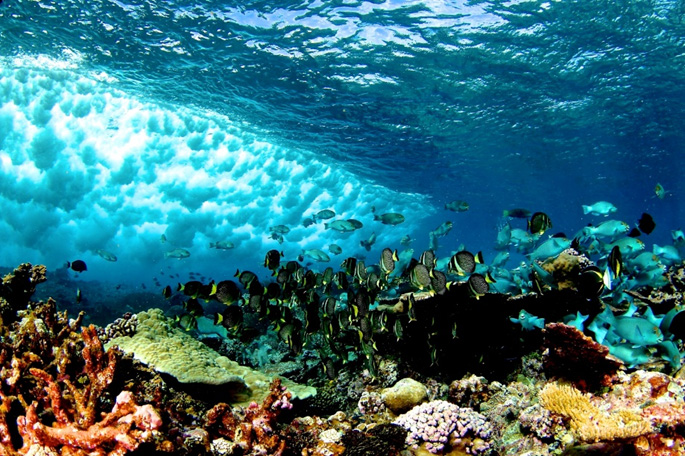Changing direction in waves is costly
Shallow marine ecosystems with dynamic wave surges, such as coral reefs, exhibits an extremely high biodiversity of fish. For these fishes, swimming in a wave-swept habitat represents a challenge as they are often site-attached, where maintaining access to specific feeding or refuge sites requires them to hold station within the water column.
An international collaboration between researchers from Copenhagen University, Hawaii Pacific University (HPU) and Indiana University in USA have recently published a study on how energetically expensive it is for fish to swim in wave-swept habitats like coral reefs. The study is published in the Journal of Experimental Biology.
The researchers used a swimming respirometer to measure different coral reef fish energy and oxygen consumption. These measurements were taken while the fishes were swimming steady and under simulated wave surges with different intensities and direction changes of the waterflow.
- ”Our study shows, that coral reef fish that has to constantly turn and accelerate to compensate for the wave surge, has twice the energy expenditure compared to fish that lives in calm water with no waves. Surprisingly, the most expensive part of dealing with the wave surge was the constant turning and not the continuously change in swimming speeds”, says Ph.D. student Mathias Sørensen from University of Hawaii, who is the first author on the publication. Mathias is a former student at the Biological institute, Copenhagen University.

Physiological adaptation to living in coral reefs
The immense diversification coral reef fishes have in body sizes and shapes is most likely driven by a pressure to adapt to become more maneuverable, making it easier to survive in a ever changing and dynamic sea. Up to about 80% of all reef fish swim by flapping their pectoral fins on their sides as opposed to the more common swimming type of beating its caudal tail.
- Professor John Fleng Steffensen, from the Marinebiological section, Biological institution says: “When we compare difference species of reef fish, it is apparent, that the fish have evolved a certain physiology to reduce energy expenditure in the habitat they are specialized in. So, some body shapes are specialized to handle specific intensities of wave surges”.
The study shows that fishes exposed to bidirectional flow regimes face a constant trade-off between energetic constraints and maximization of fitness-related activities, a balance that might change with changes in wave activity and coastal exposure.
Mathias Sørensen did his B.Sc. in John Fleng Steffensen’s research group and then graduated in Marine science at Hawaii Pacific University with professor Keith E Korsmeyer.
What studying abroad as a biology student might lead to
Mathias explains that it has been an educational experience completing his education at a university abroad, men that is has also led to some interesting collaborations:
“To study at a university abroad was undoubtedly challenging and extremely nerve-wrecking to begin with. However, it has also been extremely rewarding both professionally and personally. Academically, it has not only led to research in the tropical paradise Hawaii is, but has also opened up research opportunities on Lizard Island in Australia, a small and very isolated tropical research station, as well as in Seattle at Friday Harbor Laboratories - both in collaboration with John Fleng Steffensen. A collaboration that will continue, now that I have now been admitted as a PhD student at the University of Hawaii”.
The study was supported by Carlsbergfondet. The tuition fees of Mathias was covered by grants from Knud Højgaards Fond, Direktør Ib Henriksens Fond and Nordea-Fonden.
Kontakt
Professor John Fleng Steffensen
Marinbiologisk Sektion, Biologisk Institut
Mail: jfsteffensen@bio.ku.dk
Tlf. 45 60 77 04 90
Helle Kirstine Blæsild
Teamleader PR & Kommunikation
Biologisk Institut
Tlf: 2875 2076
Mail: helleb@bio.ku.dk
Sidsel Kretzschmer Henriksen
Videnskabsformidler
Biologisk Institut
Tlf: 3533 4147
Mail: sidsel.henriksen@bio.ku.dk
